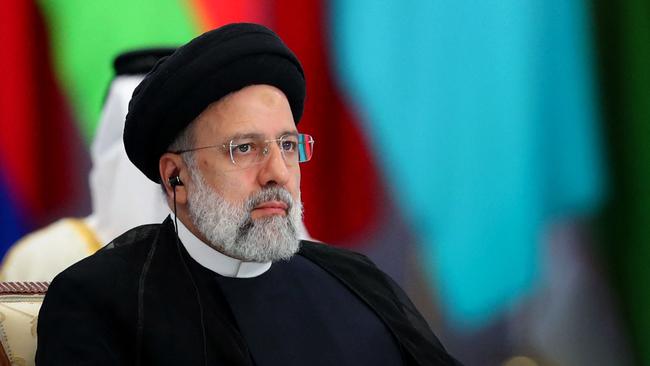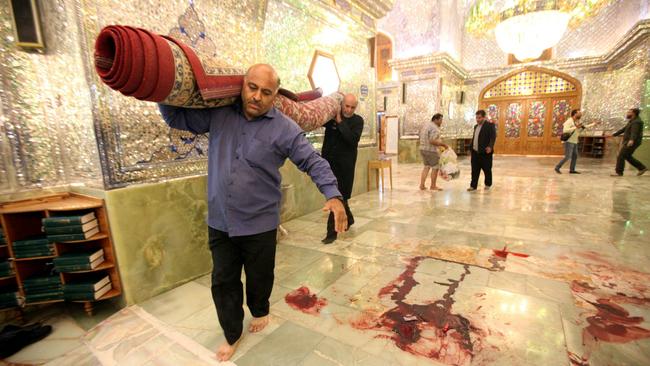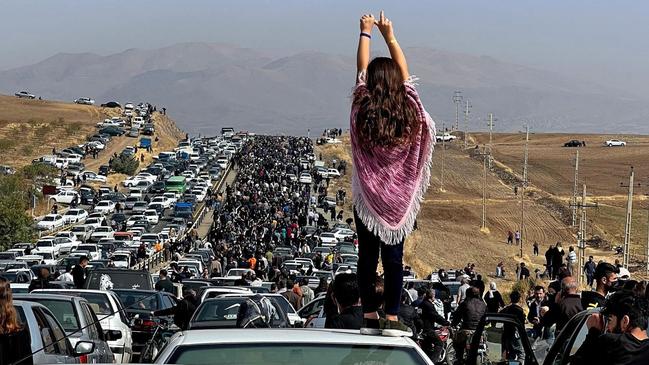Iran blames hijab protests for ISIS attack in Shiraz
In a sign of desperation in the face of nationwide protests, President Ebrahim Raisi has linked a terror attack on a shrine in Shiraz to the widespread demonstrations.

President Ebrahim Raisi of Iran blamed a terror attack claimed by Islamic State on the widespread demonstrations throughout the country that followed the death in custody of a woman arrested for not wearing proper hijab.
In an apparent sign of desperation in the face of the protests, which have now spread to every part of the country, Mr Raisi linked them to “outside forces” as well as to the attack on a shrine on Wednesday in which a gunman killed 15 people including a woman and two children in the city of Shiraz.
“The intention of the enemy is to disrupt the country’s progress, and then these riots pave the ground for terrorist acts,” he said in the government’s first response to the attack for which Islamic State quickly claimed responsibility. The terror group has carried out previous attacks on the country.

Iran has often claimed that IS’s existence is part of a complicated conspiracy engineered by the West. It has also repeatedly blamed the protests that have so far claimed the lives of more than 200 people on western countries hostile to Iran.
They began when Mahsa Amini, 22, died after three days in a coma after collapsing at a police station in Tehran. The authorities said she had a pre-existing medical condition, but her family said she was beaten around the head.
On Wednesday, the 40th day after her death, there were the broadest protests against the regime, starting at her graveside in her home town of Saqez, in Khordestan province. They continued on Thursday in Mahabad, a town in northwest Iran that is predominantly ethnically Kurdish, as was Ms Amini. Protesters set fire to government buildings and three people were killed by police and security forces.
On Wednesday, New Zealand confirmed that two missing travel bloggers, Christopher Richwhite and his wife Bridget Thackwray, who had gone missing in Iran had been released and returned home. On Thursday they said they were “very relieved”.

It later emerged that a Spanish man who was reported missing this month while walking 6437km overland to attend the football World Cup in Qatar had been arrested in Iran.
Santiago Sanchez, 41, a former paratrooper and experienced trekker, has not been heard from since he crossed the Iraqi-Iranian border on October 2.
Reports suggested he was arrested by Iranian authorities in the west of the country near the border. The news of his arrest was first reported by Iran International, a UK-based opposition broadcaster, which said he had been detained along with his interpreter after visiting the grave of Ms Amini in Saqez.
Sources in the Spanish foreign ministry confirmed his arrest to El Pais and his parents told Telecinco, a television broadcaster, that an arrest was the most likely possibility. The Spanish foreign ministry confirmed Mr Sanchez was in Iran. Sanchez had told his guide in Iraqi Kurdistan that he planned to meet an Iranian family in the Kurdish town of Marivan, about 80 miles from Saqez. There were also reports that he was being held in the Khordestan provincial capital, Sanandaj.
The Times






To join the conversation, please log in. Don't have an account? Register
Join the conversation, you are commenting as Logout